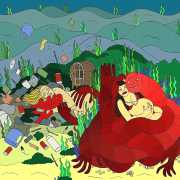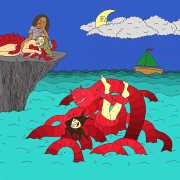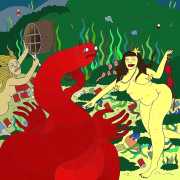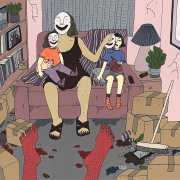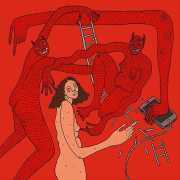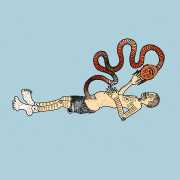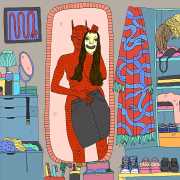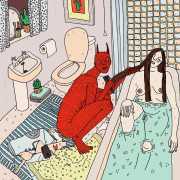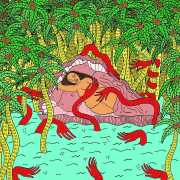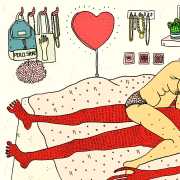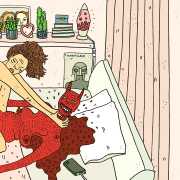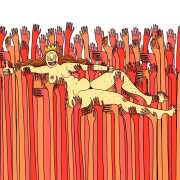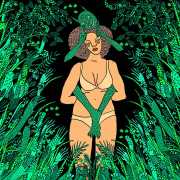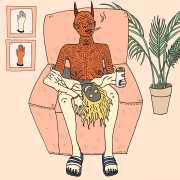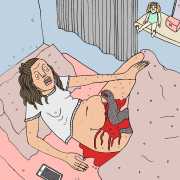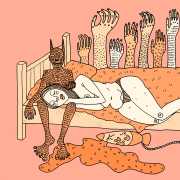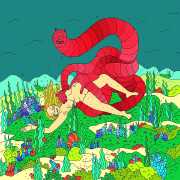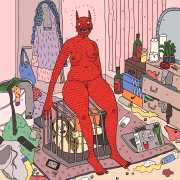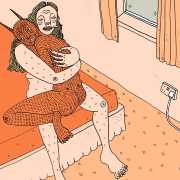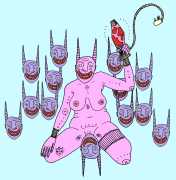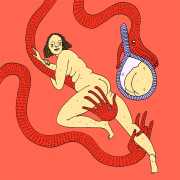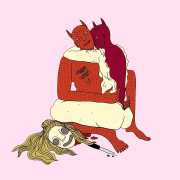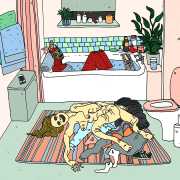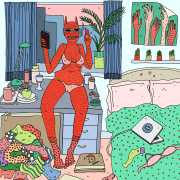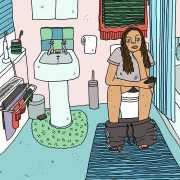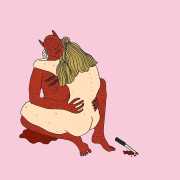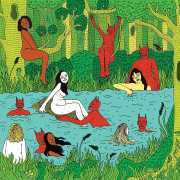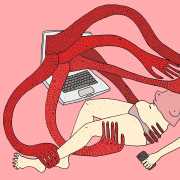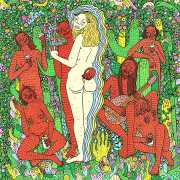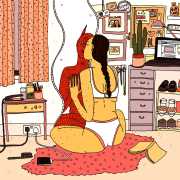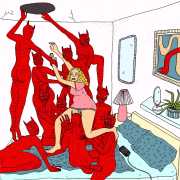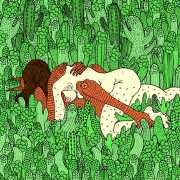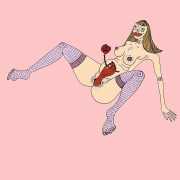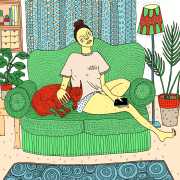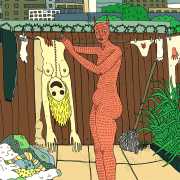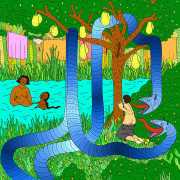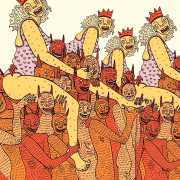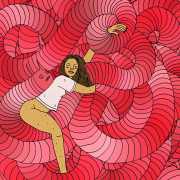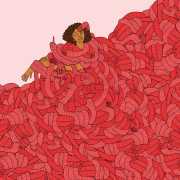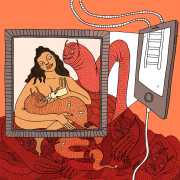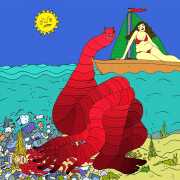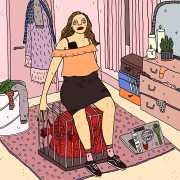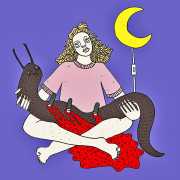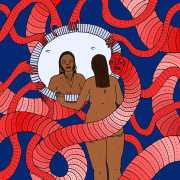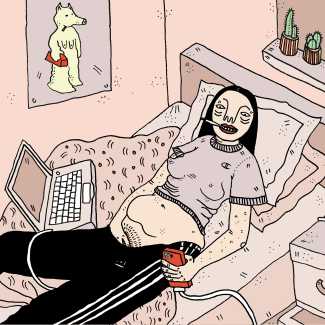 ‘The Devil Wears Nada’ is just one of the many witty titles Polly Nor gives to her trademark devil paintings – others include ‘Not All Heroes Wear Capes’, ‘It’s Complicated’, and ‘She Only Swipes Right on Sundays’. You can take Polly Nor’s work at face value and relish her drawings of devilish, mischievous imps, but when you dig into the layers you’ll find characters and narratives that deftly mirror our current state of affairs and the omnipresent dark turns the world is taking. Internet addiction, misogyny, and judgemental jerks are heavy presences in Polly’s world. Her work stands up to them, reclaiming her power, and in this way her work is art no matter what her trolls say.
‘The Devil Wears Nada’ is just one of the many witty titles Polly Nor gives to her trademark devil paintings – others include ‘Not All Heroes Wear Capes’, ‘It’s Complicated’, and ‘She Only Swipes Right on Sundays’. You can take Polly Nor’s work at face value and relish her drawings of devilish, mischievous imps, but when you dig into the layers you’ll find characters and narratives that deftly mirror our current state of affairs and the omnipresent dark turns the world is taking. Internet addiction, misogyny, and judgemental jerks are heavy presences in Polly’s world. Her work stands up to them, reclaiming her power, and in this way her work is art no matter what her trolls say.
In 2018 Kristin Farr from from Juxtapoz magazine interviewed Polly Nor. You can read the whole article here, but to whet your appetite here are a few fascinating extracts:
Many of your characters are housebound women. Why are they stuck inside?
Most of my drawings are in some way influenced by my own experiences of life. London was a cool city to grow up in; you meet loads of different kinds of people and there’s always art or music stuff going on. But when you’re young and have no money, there aren’t many places for you to hang out, so, growing up, we ended up spending a lot of time at home in our bedrooms. Throughout my teens I’d spend most of my days in my room not being able to get out of bed. I’d stay up on the computer all night and then sleep away the whole day. It’s a habit that I have only managed to overcome in the last few years, probably just because I’m so busy with work, and my studio is only open in the day, so that has really forced me out of my nocturnal tendencies.
Has the internet expanded the definition of art?
Definitely. Social media, Instagram in particular, has become a really useful platform for creatives to self-publish artwork and get it seen. You no longer have to be some old rich white guy represented by a big gallery for people to see your work. The art world still has a long way to go in terms of inclusivity, but now that anybody with an internet phone can share their work, curate their own online gallery, and develop their own following, I feel like we are seeing much more accessible and relatable art online. I love following the development of new young artists from around the world.
Like many creative women with a platform, you get trolled online. Has this affected your perspective or given you any insight?
Nothing seems to piss off the trolls quite like a woman with her own opinion on the internet. All of my favourite female writers and artists get loads of abuse online and, at times, it can get really personal and dark. It makes me feel pretty lucky with the small amount of trolling I receive. As shit as it must be for those women, I guess it’s also a sign of their success. At the end of the day, they are out there doing cool things and achieving their goals, while some person they don’t even know exists is sitting behind their computer screen plotting ways to try and bring them down. It’s kind of obvious who the winner is in that situation.
The demons in your drawings seem friendly, like they are supporting the women they surround, holding them up.
I don’t think of the demons in my work as an evil force like in most cultural depictions of the devil. I guess my interpretation of them comes in part from the saying about facing your demons. Most of my pieces are about the relationship the female character has with herself, but sometimes they are outside forces. It kind of varies from piece to piece. Sometimes the demons are destructive and menacing, but at times they’re also comforting and protective.
Why are you compelled to draw devils as a figurative way to represent desire, frustration and other feelings?
I use the devil characters to represent different ideas and stories each time. Generally I see them as a figment of the woman’s imagination, a manifestation of her emotions. I enjoy the limitation of using the same two subjects – the woman and the demons – but capturing something new each time. My best pieces definitely come from times that I have been going through my own personal struggles. I have always had really intense mood swings, and at those times I don’t even have to think about what to draw, it just flows out of me.



